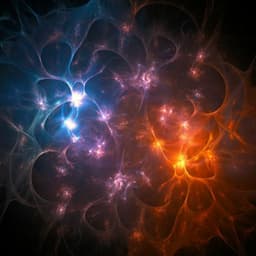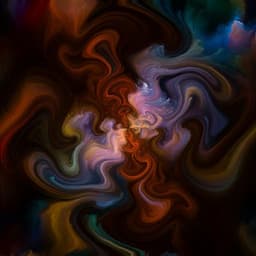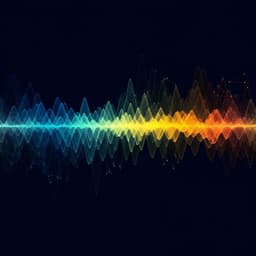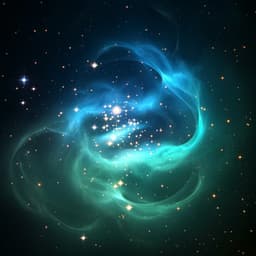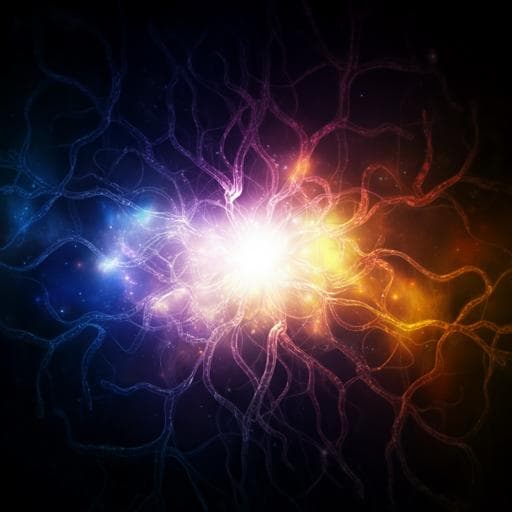
Medicine and Health
Direct comparison of the acute effects of lysergic acid diethylamide and psilocybin in a double-blind placebo-controlled study in healthy subjects
F. Holze, L. Ley, et al.
Dive into the fascinating world of psychedelics with this groundbreaking research conducted by Friederike Holze and colleagues, as they explore the differences and similarities between LSD and psilocybin. Discover how these substances affect the mind and body in surprising ways, potentially illuminating new paths in psychiatric therapy.
~3 min • Beginner • English
Introduction
The study addresses whether LSD and psilocybin differ in their acute subjective, autonomic, and endocrine effects in humans, and seeks to establish similarities and dose equivalence between them. Both are classic serotonergic psychedelics acting primarily via 5-HT2A receptor activation, with differing secondary pharmacology (LSD has dopaminergic activity; psilocin inhibits the serotonin transporter). Prior research typically studied one compound at a time, leaving comparative differences, similarities, and dose equivalence unclear. This trial directly compares two doses of LSD (100, 200 µg) and two doses of psilocybin (15, 30 mg) versus placebo in healthy subjects, assessing validated psychometric outcomes, autonomic measures, endocrine markers, BDNF, and pharmacokinetics to inform therapeutic dosing and understand mechanistic similarities/differences.
Literature Review
Background literature highlights growing therapeutic interest in LSD and psilocybin for psychiatric and neurologic disorders, with substantial evidence that both produce alterations of consciousness via 5-HT2A agonism. LSD also engages dopamine D1–3 receptors; psilocin inhibits the serotonin transporter. Prior modern studies examined LSD or psilocybin separately, often with weight-adjusted psilocybin dosing, and showed dose-dependent cardiovascular stimulation and endocrine effects. Plasma drug concentrations correlate with subjective effects for both compounds. However, no within-subject, double-blind comparisons of LSD vs psilocybin had been conducted to evaluate differences in acute subjective/autonomic effects or dose equivalence, motivating the present study.
Methodology
Design: Double-blind, randomized, placebo-controlled, crossover study with five 25-hour sessions per participant. Conditions: placebo; LSD 100 µg; LSD 200 µg; psilocybin 15 mg; psilocybin 30 mg. Order was randomized and counterbalanced with ≥10-day washout. Trial registration: NCT03604744. Ethical compliance: Declaration of Helsinki and ICH-GCP; approvals by EKNZ and Swiss Federal Office for Public Health.
Participants: N=28 healthy adults (14 women, 14 men), mean age 35 ± 9.4 years (25–52). Exclusions included psychiatric history, interacting medications, significant medical illness, heavy smoking, recent or frequent illicit drug use, and pregnancy. About half had limited prior psychedelic/stimulant exposure; 10 had no illicit drug use except cannabis. Written informed consent obtained; participants compensated.
Study drugs and blinding: LSD base (>99%) in oral ethanol solution, GMP-produced units nominally 100 µg/mL; analytically confirmed mean content 84.5 ± 0.98 µg per unit. Psilocybin dihydrate capsules (5 mg units) with mean actual psilocybin content 4.61 ± 0.09 mg. Double-dummy administration: each session used six capsules and two solutions arranged to deliver the assigned condition while preserving blinding. Placebos matched vehicle. Formulation stability verified. Participants guessed treatment after each session and at study end to assess blinding.
Procedures: Sessions began 08:00; baseline assessments followed by dosing at 09:00. Outcome measures repeated over 24 h; standardized meals at ~13:30 and 18:00. Continuous monitoring during acute phase; discharge next morning (~09:15).
Subjective outcomes: Visual Analog Scales (VAS) for drug effects at −1 h and 0–24 h at multiple timepoints. Adjective Mood Rating Scale (AMRS) at −1, 3, 6, 9, 12, 24 h. Primary endpoint: 5 Dimensions of Altered States of Consciousness (5D-ASC) assessed at 24 h for peak effects. Mystical experiences via States of Consciousness Questionnaire (MEQ43, MEQ30) and subscales (aesthetic, nadir) at 24 h. Pharmacokinetic–pharmacodynamic (PK–PD) link modeling (Phoenix WinNonlin) of “any drug effect” VAS to derive time to onset, time to peak, time to offset, and effect duration using a 10% individual maximum threshold.
Autonomic and adverse effects: Repeated measures of systolic/diastolic blood pressure, heart rate, and tympanic temperature from baseline through 24 h; pupil size at selected times. Adverse effects via List of Complaints (LC) at −1, 12, and 24 h; spontaneous events tracked up to 48 h.
Endocrine and BDNF: Plasma cortisol, prolactin (PRL), and oxytocin measured pre-dose and 2.5 h post-dose; BDNF measured at baseline, 4, 6, and 12 h.
Pharmacokinetics: Plasma LSD and psilocin quantified by validated UHPLC–MS/MS methods (LSD LLOQ 10 pg/mL). Non-compartmental PK analyses performed in Phoenix WinNonlin 8.3.
Statistics: For repeated measures, peak values (Emax/Emin or peak Δ from baseline) were analyzed by repeated-measures ANOVA with within-subject factor drug (placebo, LSD 100, LSD 200, psilocybin 15, psilocybin 30), followed by Tukey post hoc tests. Significance threshold p<0.05.
Key Findings
Subjective effects: LSD 100 µg, LSD 200 µg, and psilocybin 30 mg produced largely comparable maximal subjective effects across VAS and 5D-ASC measures. LSD 200 µg exceeded LSD 100 µg in ego-dissolution (p<0.05) and showed a trend toward more anxiety (p=0.054). The only significant difference between LSD 200 µg and psilocybin 30 mg was higher 'ineffability' (MEQ) with LSD 200 µg. Psilocybin 15 mg produced significantly weaker effects than LSD 200 µg and psilocybin 30 mg on multiple VAS domains (e.g., any drug effect, good drug effect, stimulated, talkative, time perception, ego-dissolution; all p≤0.01) and lower 5D-ASC total and main dimensions (anxious ego dissolution, oceanic boundlessness, visionary restructuralization; all p<0.001). On AMRS, LSD doses increased 'emotional excitation' more than psilocybin.
Effect time-course (PK–PD, 'any drug effect' VAS; mean ± SD): time to onset (h): psilocybin 15 mg 0.8±0.3; psilocybin 30 mg 0.8±0.4; LSD 100 µg 0.6±0.2; LSD 200 µg 0.4±0.2 (ANOVA F3,81=12.5, p<0.001). Time to peak (h): 15 mg 2.1±0.5; 30 mg 2.3±0.8; LSD 100 µg 2.5±0.5; LSD 200 µg 2.2±0.6 (F=3.8, p<0.05). Time to offset (h): 15 mg 6.4±2.1; 30 mg 7.3±2.3; LSD 100 µg 10.0±3.1; LSD 200 µg 11.0±3.6 (F=31.2, p<0.001). Effect duration (h): 15 mg 5.6±2.2; 30 mg 6.5±2.4; LSD 100 µg 9.3±3.2; LSD 200 µg 11.0±3.7 (F=34.4, p<0.001). Maximal effect (% of scale maximum): 15 mg 58±25; 30 mg 80±18; LSD 100 µg 77±18; LSD 200 µg 87±13 (F=20.0, p<0.001). LSD had earlier onset and longer duration than psilocybin.
Sex differences: No significant differences between male and female participants in subjective or autonomic/adverse effects.
Autonomic effects: Both drugs increased systolic/diastolic blood pressure, heart rate, temperature, and pupil size vs placebo. Psilocybin (30 mg) increased blood pressure and body temperature more than LSD (100/200 µg) and psilocybin 15 mg. LSD (both doses) increased heart rate more than psilocybin (both doses). Rate-pressure product indicated overall similar cardiostimulant load for LSD 100/200 µg and psilocybin 30 mg; psilocybin 15 mg was lower. Both 200 µg LSD and 30 mg psilocybin impaired light-induced pupil constriction.
Endocrine/BDNF: LSD and psilocybin significantly increased plasma cortisol, prolactin, and oxytocin. Neither elevated plasma BDNF.
Pharmacokinetics: Linear (dose-proportional) PK and first-order elimination for both drugs. LSD: geometric mean Cmax 1.9 ng/mL (100 µg) and 3.4 ng/mL (200 µg); Tmax ~1.6 h; t1/2 ~4.3 h (100 µg) and 4.0 h (200 µg). Psilocin (from psilocybin): Cmax 13 ng/mL (15 mg) and 25 ng/mL (30 mg); Tmax 2.3 h and 2.5 h; t1/2 2.4 h and 2.7 h. Body weight did not affect PK.
Adverse effects: Both agents increased acute (0–12 h) LC scores versus placebo; subacute (12–24 h) LC scores were higher with high doses (LSD 200 µg, psilocybin 30 mg) vs placebo. Spontaneous adverse events within 48 h included headaches (7 cases across both drugs), migraine (1; LSD), nosebleed (1; psilocybin), low mood (4), nausea (3), nightmares (1; psilocybin), restlessness (2), vivid dreams (1; LSD), insomnia (1; psilocybin), involuntary leg movements (1; LSD). Nine flashback episodes in five subjects (within 72 h; 5 after LSD, 4 after psilocybin). No severe adverse events.
Blinding: Placebo correctly identified in 96% of sessions. Active conditions were often confused with each other; no reliable discrimination between LSD and psilocybin, supporting similarity of subjective effects at comparable intensities.
Dose equivalence: Data suggest ~20 mg psilocybin ≈ 100 µg LSD base; ~30 mg psilocybin ≈ 150 µg LSD; approximate LSD:psilocybin dose equivalence ~1:200.
Discussion
This within-subject, double-blind comparison shows that LSD and psilocybin produce qualitatively and quantitatively similar acute subjective effects at doses yielding comparable intensities. Differences between substances were minimal and largely attributable to dose and pharmacokinetics rather than distinct pharmacology, with psilocybin exhibiting shorter duration and later peak consistent with its shorter half-life and capsule formulation. Autonomic profiles diverged modestly: psilocybin produced greater blood pressure and temperature increases, whereas LSD increased heart rate more; overall cardiostimulant burden was similar at equipotent doses. Endocrine responses (cortisol, prolactin, oxytocin) were increased by both, while BDNF was unchanged, suggesting shared serotonergic activation without detectable peripheral BDNF changes under these conditions. The findings yield practical dose equivalence estimates (≈20 mg psilocybin ≈ 100 µg LSD; ≈30 mg psilocybin ≈ 150 µg LSD) that can guide dosing in therapeutic research and support the use of fixed dosing. The lack of sex differences and robust blinding further indicate that acute experiential outcomes are primarily dose-dependent. Safety findings reveal moderate, transient autonomic and adverse effects with increased subacute complaints at higher doses, underscoring the importance of dose selection and monitoring.
Conclusion
LSD (100–200 µg) and psilocybin (15–30 mg) produce largely comparable acute subjective effects in healthy subjects when matched for intensity, with psilocybin having a shorter duration of action. Approximate dose equivalence is ~1:200 (e.g., ~20 mg psilocybin ≈ 100 µg LSD). Both compounds show dose-proportional pharmacokinetics, similar overall cardiostimulant load at equipotent doses, and comparable endocrine responses. These results support fixed-dose strategies and inform dose selection in future psychedelic-assisted therapy studies. Future research should evaluate these dose equivalencies and safety profiles in patient populations and clinical settings, explore broader dose ranges (including intermediate LSD doses, e.g., 150 µg), and further characterize long-term safety and therapeutic outcomes.
Limitations
The study was conducted in a highly controlled laboratory setting with healthy volunteers, limiting generalizability to clinical populations and real-world settings. Psilocybin doses (15, 30 mg) may not perfectly match the strength of the chosen LSD doses (100, 200 µg), potentially affecting cross-substance comparisons; an intermediate LSD dose (e.g., 150 µg) was not tested. The true LSD content per unit was ~11–14% lower than in prior formulations, and minor table transcription artifacts may affect range reporting, though overall conclusions are robust. BDNF was assessed peripherally and at limited timepoints, which may not capture central neuroplasticity. Adverse effects were mostly mild to moderate; findings may differ in vulnerable populations.
Related Publications
Explore these studies to deepen your understanding of the subject.



